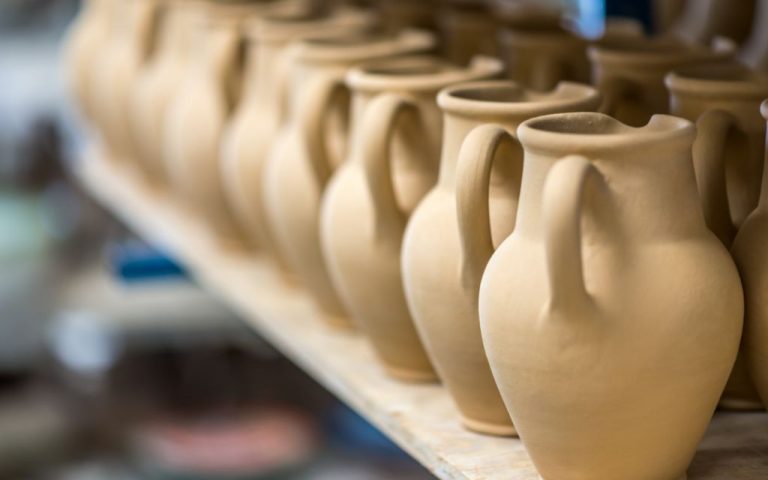What Temperature Is Fire In Fahrenheit?
Defining Fire Temperature
Fire temperature refers to the temperature at which a flame burns during combustion. It is a measure of the heat intensity produced by the chemical reaction of burning fuel. Fire temperature is an important property that determines the characteristics and behavior of fire.
There are several methods used to measure fire temperature, including thermocouples, infrared thermometers, and optical pyrometers. Thermocouples consist of two metals joined at one end that produce a voltage proportional to the temperature difference. Infrared thermometers sense the thermal radiation given off by flames to estimate temperature. Optical pyrometers compare the color and brightness of flames to a standardized scale to determine temperature.
Accurately measuring fire temperature provides crucial data for fire investigations, material testing, fire modeling, and assessing fire hazards. It allows firefighters and scientists to better understand fire dynamics and improve safety protocols.
Typical Fire Temperatures
Fires can burn at a wide range of temperatures depending on the fuel source, air supply, and other conditions. Here are some typical fire temperatures for common types of fires:
According to Target Fire Protection [1], some examples of typical fire temperatures include:
- Burning match – 600-800°F
- Propane torch – approximately 1900°C or 3450°F [1]
- According to Smorescience [2], an orange-yellow fire burns at around 1100°C or 2012°F.
- A white flame is hotter, with temperatures of 1300–1500°C or 2400–2700°F [2].
As a general rule, hydrocarbon fuels like wood, paper, oil, and natural gas burn in the 800°C to 1000°C range. More energetic fuels like acetone and ethanol burn hotter, from 1600-1900°C [1].
The maximum burning temperature occurs with acetylene at around 3300°C.
Factors Affecting Fire Temperature
There are several key factors that influence the temperature of a fire, including the fuel source, oxygen levels, and containment of the fire. According to the National Wildfire Coordinating Group, temperature of fuels and surrounding air is a major determinant of fire ignition and spread (https://www.nwcg.gov/publications/pms425-1/temperature).
The type and amount of fuel affects fire temperature. For example, fires involving flammable liquids or gases can reach over 1000°F. Fires fueled by wood and organic materials typically reach up to 1100°F. The more fuel available to burn, the hotter the fire temperature (https://esajournals.onlinelibrary.wiley.com/doi/full/10.1002/ecs2.1794).
Oxygen levels also impact fire temperature. Fires burn hotter and faster in environments with more available oxygen. Providing adequate ventilation to supply oxygen, through openings or fans, can increase fire temperatures.
Containment of the fire affects temperature buildup. Fires in confined spaces concentrate heat, allowing temperatures to rise dramatically compared to open burning. Partially contained fires, such as crown fires in forest canopies, can also burn hotter than surface fires.
Extreme Fire Temperatures
Fires can reach incredibly high temperatures under extreme conditions. Some examples of extreme fire temperatures include:
- In July 2023, the temperature reached 100°F in Canada’s Northwest Territories, the farthest north that temperature has ever been recorded (Source). Temperatures also hit 121°F in British Columbia during an intense heat wave that fueled wildfires.
- In forest fires, temperatures can climb as high as 1100°F to 1200°F. The Hirz Fire in California in 2018 recorded temperatures over 2000°F (Source).
- Flashover occurs when the heat from a fire causes all combustible material in an area to ignite at once. Temperatures during flashover can exceed 1100°F.
- Backdraft is an explosive event caused when oxygen rapidly enters a space containing superheated gases. Temperatures in backdrafts can reach over 1000°F.
These extreme fire events illustrate how temperatures can spike to record levels under the right fire conditions. Climate change is expected to make such events more likely in the future.
Fire Temperature Scales
There are several temperature scales used to measure the heat of fire, with the most common being Celsius, Fahrenheit, and Kelvin.
The Celsius scale, also known as centigrade, is the standard metric scale for most of the world. On this scale, the freezing point of water is 0°C and the boiling point is 100°C. Typical flame temperatures on the Celsius scale range from about 600°C for a candle flame up to around 1,600°C for acetylene torches.
The Fahrenheit scale is primarily used in the United States. On the Fahrenheit scale, water freezes at 32°F and boils at 212°F. For fire, temperatures can range from about 1,100°F to over 2,800°F on the Fahrenheit scale.
The Kelvin scale is the scientific standard, where 0 Kelvin represents absolute zero. Temperatures start at 273.15°K, which is equal to 0°C. Fire temperatures on the Kelvin scale usually range between about 900°K to 2,000°K.
To convert between the different temperature scales, formulas and calculators must be used. But broadly speaking, a temperature of 600°C would be around 1,100°F and 900°K.
Fire Triangle
The fire triangle is a model that illustrates how heat, fuel, and oxygen interact to produce fire. For combustion to occur, heat, fuel, and oxygen must all be present at the same time in the right proportions. If any one of these elements is missing or limited, fire cannot start or be sustained.
Heat provides the activation energy to start the chemical reaction between oxygen and fuel. Common heat sources include open flames, sparks, friction, or electricity. The fuel acts as the reducing agent, providing hydrocarbons to be oxidized in the combustion reaction. Fuels can be any combustible material such as wood, paper, oil, or plastics. Oxygen supports combustion by acting as the oxidizing agent. Air contains around 21% oxygen, allowing most fires to draw in ambient oxygen from the surrounding environment.
These three components form the three sides of the fire triangle. Remove one side and the fire triangle breaks down, stopping combustion. Fire suppression techniques like sprinklers, fire blankets, and extinguishers work by limiting one or more elements of the fire triangle.
Heat Transfer
Fire spreads heat through three main methods: conduction, convection, and radiation.[1]
Conduction is the transfer of heat between objects that are in direct contact with each other. For example, a metal cooking pot conducts heat from the stove burner to the food inside. Conduction spreads heat through solids much more quickly than air.[2]
Convection is the transfer of heat by the movement of heated gases or liquids. Hot air rising from a fire is an example of convection. Convection transfers heat through fluids (gases and liquids).
Radiation is the transfer of heat in the form of electromagnetic waves or photons. Radiant heat from a fire can travel through empty space. Campfire heat that reaches your skin is transferred by radiation. Radiation does not require direct contact between objects.[1]
[1] https://www.target-fire.co.uk/resource-centre/how-do-fires-spread/
[2] https://wtamu.edu/~cbaird/sq/2015/02/26/when-i-sit-by-a-campfire-how-does-its-hot-air-heat-me/
Measuring Fire Temperature
There are several methods for measuring the temperature of fire. Common instruments include:
Thermocouples
Thermocouples are simple, inexpensive sensors made from two dissimilar metals joined at one end. When placed in a fire, a voltage is generated that can be correlated to temperature. Thermocouples can withstand very high temperatures up to 3000°F. They are one of the most common tools for measuring flame temperature due to their durability, accuracy and fast response time.[1]
Pyrometers
Pyrometers measure the thermal radiation emitted from a fire without contacting the flame itself. The amount of radiation is correlated to temperature. They can measure temperatures above 1000°F from a distance, but accuracy depends on having a clean line of sight to the fire. Pyrometers are useful for monitoring hot or hazardous environments.[2]
Heat Flux Gauges
Heat flux gauges measure the heat flux density incident on their surface, which can be used to calculate flame temperature. They incorporate a thermopile sensor and can withstand high radiant heat. Heat flux gauges are often used in fire testing to analyze thermal exposure and fire dynamics.[3]
Other methods like spectral analyzers are used in research applications. But thermocouples, pyrometers and heat flux gauges are among the most common instruments for measuring flame temperature in industry and fire safety applications.
Sources:
[1] https://www.scientia.global/wp-content/uploads/Chowdhury_Kumbhakarna/Chowdhury-and-Kumbhakarna.pdf
[2] https://fireecology.springeropen.com/articles/10.4996/fireecology.0101075
[3] https://www.controlinstruments.com/technologies/flame-temperature-analyzer
Consequences of High Temperature
Extremely high temperatures from fires can lead to devastating consequences such as property damage, injuries, and even death for those exposed. According to
UCLA Newsroom, the combination of extreme heat and smoke from wildfires affects millions in California every year, leading to respiratory and circulatory issues that can be fatal.
Prolonged exposure to high temperatures from fires has been shown to cause heat stroke, heat exhaustion, hyperthermia, and cardiovascular strain even in healthy individuals as reported by
ABC News. In addition to the physiological dangers, the intense heat can ignite and spread the fire rapidly, destroying homes, properties, and entire communities.
It’s critical for those affected by fires producing extreme heat to take precautions, seek medical attention if necessary, and have emergency plans in place. With temperatures from fires sometimes exceeding 1000°F in the flame itself, the consequences highlight the need for preparation, prevention, and research into mitigating these hazards according to experts cited in
The New York Times.
Preventing and Withstanding High Temps
There are various materials and systems that can help prevent fires from spreading and withstand the extreme temperatures they generate. Using fire-resistant construction materials is one of the most effective ways to protect homes and buildings in high-risk fire areas.
Fire-resistant materials like stone, brick, and metal roofing (https://utilitiesone.com/fire-resistant-construction-materials-for-high-risk-areas) are specifically designed to prevent ignition and withstand high heat. They prevent flames from penetrating the structure and reduce the likelihood of collapse. Hardening homes by replacing flammable materials with non-combustible alternatives helps create defensible space (https://www.readyforwildfire.org/prepare-for-wildfire/get-ready/hardening-your-home/).
Fire suppression systems like interior and exterior sprinklers add another layer of protection. They detect fires quickly and control small blazes before they grow out of control. Proper emergency planning, evacuation procedures, and having an adequate water supply also helps mitigate fire damage.
Taking preventative measures allows structures to withstand extreme fire temperatures and improves safety for occupants and first responders.



